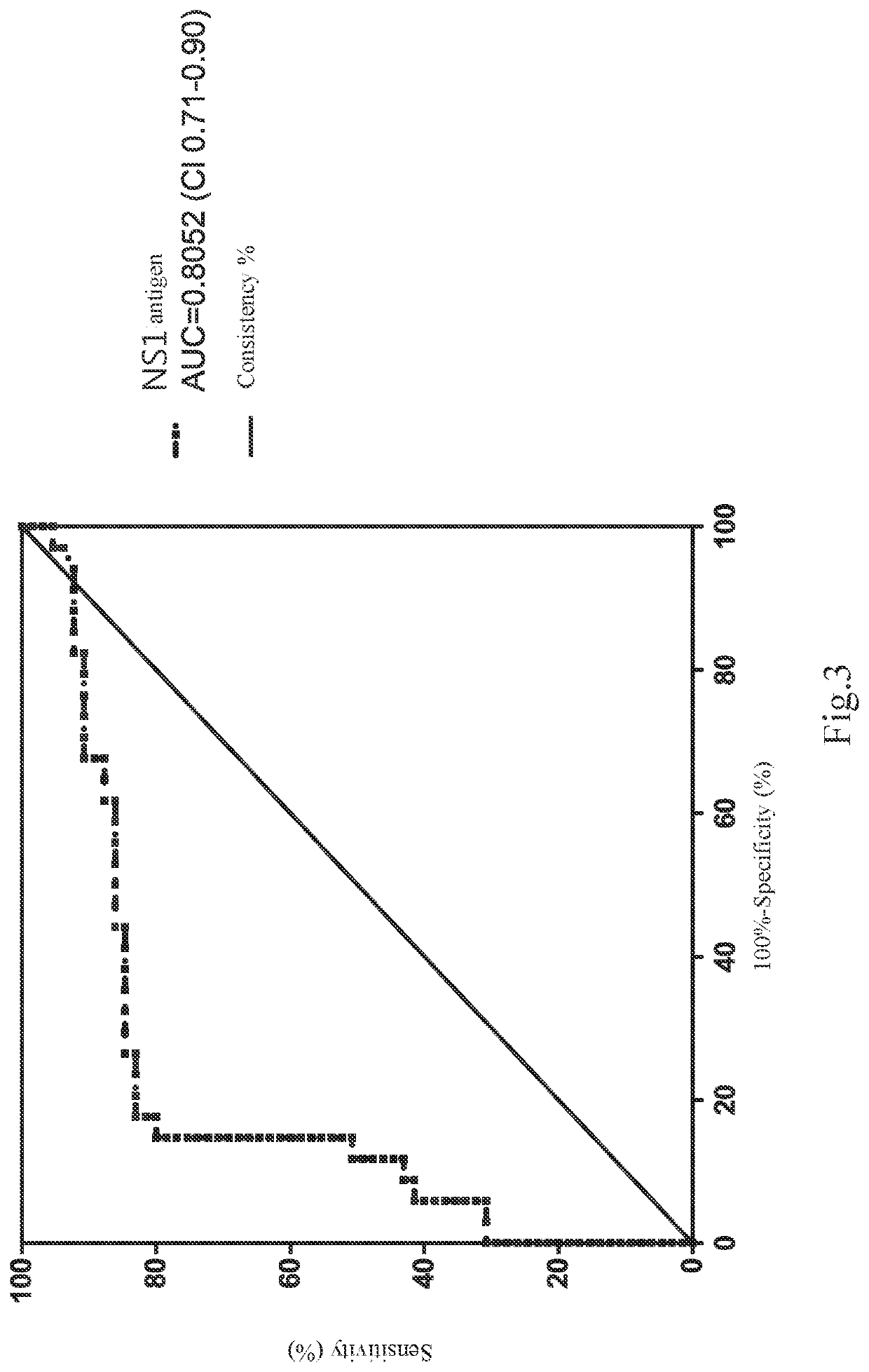Method of elevating prediction accuracy of grouping subjects with severe dengue infection
a dengue infection and grouping method technology, applied in the field of medical examination methods, can solve the problems of prolonging the activation of partial thromboplastin, severe bleeding, and current test techniques that cannot meet the clinical need to predict the severity of dengue fever, so as to reduce false negative rate of testing results, increase prediction accuracy, and improve the effect of accuracy
- Summary
- Abstract
- Description
- Claims
- Application Information
AI Technical Summary
Benefits of technology
Problems solved by technology
Method used
Image
Examples
example 1
1. Virus Strain
[0049]A dengue virus serotype 1 (DENV 1, Taiwan virus strain 8700828), serotype 2 (DENV 2, virus strain 16681 and Taiwan virus strain 454009 A), serotype 3 (DENV 3, Taiwan virus strain 8700829), and serotype 4 (DENV 4, Taiwan virus strain 59201818) could be replicated in C6 / 36 cells using a conventional culture method. Virus culture was known to those of ordinary skill in the art of the present invention, so the details were not described herein. By using a commercially available centrifugation apparatus (for example, Macrosep® Advance Centrifugal Devices with a molecular weight cut-off of 30 kDa, Pall Corp., Port Washington, N.Y.), the supernatant after removal of cells was concentrated into DENV with a high viral titer at a rotation speed of 6000×g at 4° C., and then the DENV was stored in an environment lower than −70° C. for later use.
2. Serum Collection
[0050]This example used sera from 67 confirmed dengue patients, obtained in an acute phase (0-7 days after the o...
example 2
[0055]Following the method of example 1, an optical density (OD) value of the antibody (IgG) against modified NS1-WD peptide and an OD value of the antibody (IgG) against NS1 of all serotypes in the sera of the patients were separately detected, and then a ratio (NS1-WD IgG / NS1 IgG) of the OD values was used to evaluate the dengue fever patients varying in severity. The result was shown in FIG. 1.
[0056]Referring to FIG. 1, FIG. 1 showed a content ratio of anti-modified NS1-WD IgG / anti-NS1 IgG in sera of various dengue fever patients according to an example of the present invention, where the symbol * represented p<0.05, the symbol ** represented p<0.01, and the symbol *** represented p<0.001.
[0057]As shown in FIG. 1, compared to the sera (N=20) of the dengue fever patients having warning signs or the sera (N=30) of the dengue fever patients having no warning signs, the sera (N=17) of the patients with severe dengue infection had a significantly reduced content ratio of anti-NS1-WD I...
PUM
 Login to View More
Login to View More Abstract
Description
Claims
Application Information
 Login to View More
Login to View More - R&D
- Intellectual Property
- Life Sciences
- Materials
- Tech Scout
- Unparalleled Data Quality
- Higher Quality Content
- 60% Fewer Hallucinations
Browse by: Latest US Patents, China's latest patents, Technical Efficacy Thesaurus, Application Domain, Technology Topic, Popular Technical Reports.
© 2025 PatSnap. All rights reserved.Legal|Privacy policy|Modern Slavery Act Transparency Statement|Sitemap|About US| Contact US: help@patsnap.com



